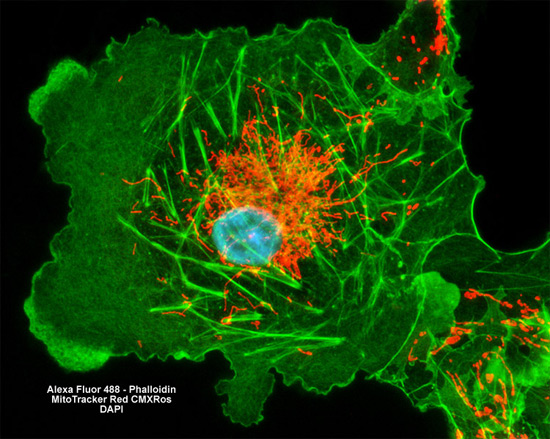The COS-7 cell line was developed by Yakov Gluzman in the early 1980s from the earlier normal CV-1 African green monkey kidney line by transforming the normal cells with an origin defective mutant of simian virus 40 (SV40) that codes for the wild-type virus T-antigen. The transformed fibroblast line, which is susceptible to SV40 (tsA209 strain) at 40 degrees Celsius and SV40 mutants with deletions in certain regions, is typically employed as a transfection host.
Transformed (Simian Virus 40) African Green Monkey Kidney Fibroblast Cells

The COS-7 African green monkey kidney fibroblast cell culture shown in the digital image above was labeled with MitoTracker Red CMXRos (yielding red emission) and Alexa Fluor 488 (green emission) conjugated to phalloidin in order to target mitochondria and the cytoskeletal F-actin network, respectively. In addition, nuclei were counterstained with DAPI (blue emission). Images were recorded in grayscale with a Hamamatsu ORCA AG camera system coupled to a ZEISS Axio Imager microscope equipped with bandpass emission fluorescence filter optical blocks provided by Chroma and Semrock. During the processing stage, individual image channels were pseudocolored with RGB values corresponding to each of the fluorophore emission spectral profiles.



